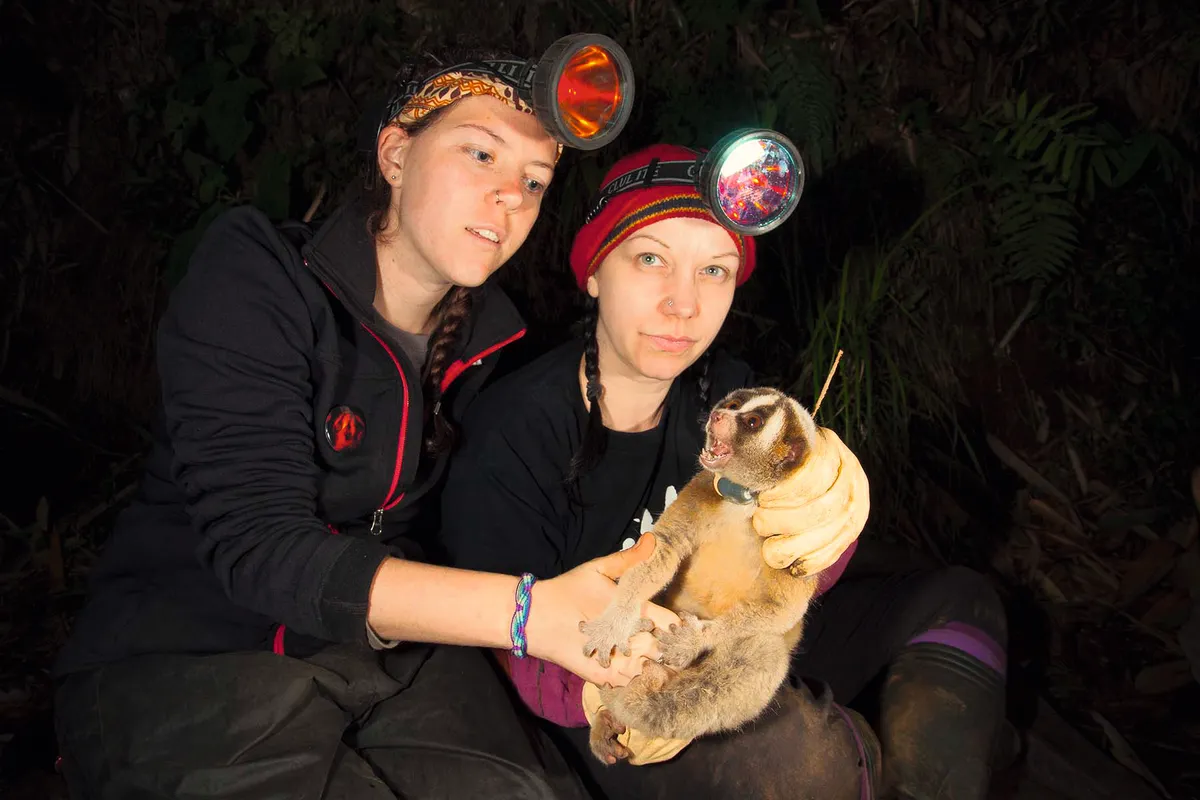The slow loris has large eyes, a big brain, looks incredibly cute and is absolutely deadly. It is among the few venomous mammals – just one of the many facets of this fascinating animal being revealed by Anna Nekaris’s research.
Another interesting trait is that it mimics an unpalatable animal to put off potential predators – a phenomenon known as Batesian mimicry. In the case of the slow loris, it pretends to be a cobra.“It is quite cute – you are holding this slow loris to put a radio collar on it and it puts its arms above its head and just starts swaying and hissing at you,” says Nekaris.
But it is when it wraps its arms around its head and hides its face that you’ve got to worry – it is licking the secretion from the gland on the front of its upper arm (the brachial gland), which, when mixed with saliva, adds to the saliva’s toxicity. “They strike at you like a snake,” exclaims the primatologist.
In the early days, it was disputed whether a loris’s bite was venomous or not. Nekaris herself was bitten: “I only had a little bit of a terrible reaction – I had a mild anaphylactic shock.” A colleague, who didn’t believe they were venomous at the time, was bitten and hospitalised for a week.

Nekaris originally studied literature and history, wanting to be a journalist, before switching to anthropology. Her studies took her first to Africa to study bush babies, but as a vegetarian she could not cope with the culture of bushmeat. So, she went to India to study the Mysore slender loris. “I wanted my own ecological niche, so I picked a species that we knew nothing about in a country where conservation action was urgently needed,” says Nekaris.
Her most recent published work is a result of an eight-year study of Javan slow lorises, which has shown that they use their venomous bites in intraspecific competition – open warfare within their own species. Both males and females use it – the males often to defend mates, and the females to defend resources: lorises eat gum from trees, which they tap over long periods of time, creating territorial assets.
This is very unusual: in a survey of all known independently evolved venomous lineages, only four species were identified to use venom for intraspecific competition.
“The interesting thing is that the intraspecific competition is so intense,” says Nekaris. “There are no primates that bite each other like slow lorises, it is one of the [top] causes of death in rescue centres.”
Nekaris leads The Little Fireface Project, which studies the ecology of the slow and slender lorises, and contributes wherever possible to the conservation and ecology of loris species throughout their range.
Main image: Dr Anna Nekaris. © Andrew Walmsley
